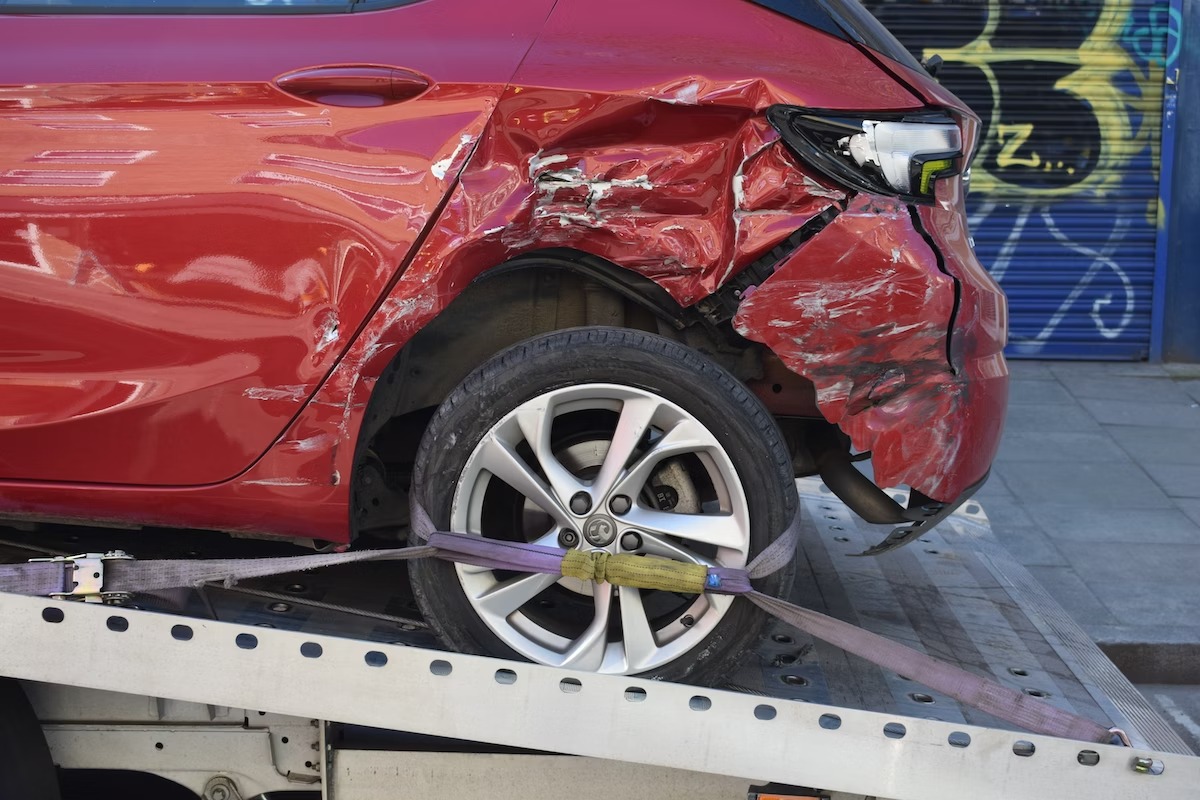If you have the right job then you probably enjoy going to work. At the least, it should feel rewarding and safe.
However, despite vast improvements in safety protocols, accidents can and still happen at work.
The following workers comp claims statistics illustrate how dangerous the workplace can be and that you need to be vigilant at all times.
If you’re running a business the following statistics should make you think twice about workers compensation insurance.
Just one case can cover the cost of the insurance.
It can also make the difference between the business surviving a claim, or not.
Post Contents
- 1 Key Statistics
- 2 Top Workers Comp Claims Statistics in 2024
- 2.1 1. 4.9 Million Workers Compensation Claims Are Filed Every Year
- 2.2 2. An Average Claim Results In A $41,000 Payout
- 2.3 3. $62 Billion Is Paid Every Year Relating To Workers Comp Claims
- 2.4 4. 4,764 Workers Died In 2020 Due To Workplace Accidents
- 2.5 5. Construction Is Listed As The Most Dangerous Job
- 2.6 6. Transportation Accidents Are The Top Cause Of Workplace Claims
- 2.7 7. The Most Costly Workers Comp Claims Happen When Amputation Occurs
- 2.8 8. Hispanic Or Latin Workers Are More Likely To Be Fatally Injured
- 3 Is Workers Comp Insurance Obligatory?
- 4 Reducing Claims
- 5 Summing Up
- 6 Sources
Key Statistics
- 4.9 million workers compensation claims are filed every year
- An average claim results in a $41,000 payout
- $62 billion is paid every year relating to workers comp claims
- 4,764 workers died in 2020 due to workplace accidents
- Construction is listed as the most dangerous job
- Transportation accidents are the top cause of workplace claims
- The most costly workers comp claims happen when amputation occurs
- Hispanic or latin workers are more likely to be fatally injured
Top Workers Comp Claims Statistics in 2024

1. 4.9 Million Workers Compensation Claims Are Filed Every Year
Not every incident in the workplace results in a claim, although employers are legally bound to report any incident.
That means the records are surprisingly accurate.
By simply checking the number of claims made it’s possible to deduce that over 4.9 million workers compensation claims are filed each year.
This figure includes private and government employees.
(Simply Insurance)
2. An Average Claim Results In A $41,000 Payout
There are many different reasons and factors involved in each accident.
However, whatever the cause, if the accident wasn’t the employees fault, they should be entitled to compensation.
The aim of compensation is to cover the cost of recovery.
That includes dealing with physical and mental pain, as well as covering the cost of all necessary medication.
The average cost of a workers comp claim is $41,000.
However, transportation-related issues generally cause more issues medically and psychologically. The average cost of a transportation accident is $85,311.
Burns are also a costly issue, with an average of $54,173. In addition, falls and slips average $48,575.
Both of these are above the average cost of a workers comp claim.
(NSC injury facts)
3. $62 Billion Is Paid Every Year Relating To Workers Comp Claims
Once a claim is filed the insurer will need to assess it to see if the employer was at fault.
If that’s the case the insurer will negotiate a cash settlement with the injured party.
This is preferable to going to court.
Although this approach reduces the cost of claims to the insurance company, they still spend billions every year looking after people.
Interestingly, the payout for workers compensation claims is roughly $62 billion a year.
Approximately half of this is paid to the injured people.
The other half goes to hospitals and pharmacies, covering the medical costs associated with the recovery process.
That can include the cost of psychological help, if needed.
(Simply Insurance Survey)
4. 4,764 Workers Died In 2020 Due To Workplace Accidents
Any accidental death is regrettable. That’s why all workplaces must take steps to minimize risk and protect employees.
In 2020 there were 4,764 recorded workplace fatalities. In 2021, this number climbed to 5,190.
It’s likely 2020 was an unusual year as it was the start of the global pandemic. Prior to this, deaths were relatively static.
For example, in 2019 there were 5,333 fatalities related to workplaces.
In 2018 there were 5,250 fatalities and 5,147 in 2017.
In short, despite small fluctuations, work-related fatalities stay around the 5,000 mark. That’s something all employers should be aiming to reduce.
(Foresight Risk)
5. Construction Is Listed As The Most Dangerous Job
Construction comes behind transportation and warehousing for work-related deaths.
However, it is still considered the most dangerous job industry as there are more injuries in this industry than in any other.
The most common issues in construction are often referred to as ‘the fatal four’.
These are falls, being struck by an object; squashed between pieces of equipment, and electrocution.
This doesn’t always result in a fatality.
However, because there are so many mechanical parts the risk of an injury is much greater within the construction industry compared to any other.
It’s worth noting that 50% of serious injuries happen to young people.
That’s anyone up to 34 years old. This could be due to a lack of training or inexperience overriding safety protocols.
Fortunately, in many cases the injuries are limited to sprains, tears, fractures, and other lacerations.
They can still become a workplace comp claim but at least it’s a straightforward injury as opposed to a death.
(National Safety Council)
6. Transportation Accidents Are The Top Cause Of Workplace Claims

If you’re an injured employee you may not be worried about how common your type of injury is.
However, as an employer it’s very important to understand the cause of the issue.
This will help you adjust your policies and protocols to avoid such an incident from happening again.
As of 2020, transportation accidents are the most common.
There were 49,700 accidents within the transportation industry.
Warehousing has a similar level of claims and the pair are closely followed by construction.
Interestingly, this held true in 2020, despite there being fewer vehicles on the road.
In 2020 37.3% of workers comp claims were a result of transportation issues. That’s 16.2% lower than 2019.
The next most common cause is falls in 17% of cases.
This is followed by direct contact with equipment at 15%, and assaults and violence, also at 15%
By comparison, fires and explosions cause very few accidents.
Just 1.4% of all fatalities are a result of fires and explosions.
(BThe 2020 Census)
7. The Most Costly Workers Comp Claims Happen When Amputation Occurs
Transportation injuries are common in any workplace.
Moving items and people around will create situations where things fall and people are injured.
The type of injury can vary depending on how direct the hit was and what damage was done.
Equally, depending on what happened, the cost of dealing with the injury can rise dramatically.
Falling objects can often obliterate limbs, leaving doctors with no choice but to amputate.
This is more common than you think.
According to OSHA, seven amputations happen every day as a direct result of workplace injuries.
It should be noted that some states have their own health and safety programs and are not obliged to report serious injuries to OSHA.
In other words, the number of amputation injuries could be significantly larger.
The surgical process is generally cheaper but the rehabilitation is longer and more costly.
That’s why amputation injuries generally have a claim value of $118,837.
Fractures, crush injuries and dislocations also require extensive rehabilitation. The average claim value for these is $60,934.
(NSC Injury Facts, OSHA)
8. Hispanic Or Latin Workers Are More Likely To Be Fatally Injured
The number of Hispanic and Latin workers involved in fatal incidents is much larger than for the rest of the population.
It’s likely that this is a result of menial jobs with minimal training.
Fatal injuries happening to Hispanic or Latin workers have increased from 20.4% in 2019 to 22.5% in 2020.
That means 1,072 Hispanic and Latin workers were fatally injured as a result of workplace accidents.
If that figure wasn’t bad enough, it should be noted that the rate of work-related fatalities increased despite there being a global pandemic.
This is a direct contrast to other ethnic groups which are seeing a flat trend with even a little decrease in recent years.
(BThe 2020 Census)
Is Workers Comp Insurance Obligatory?
Every state has its own set of rules. In other words, every employer should check the requirements of the state they are registered in.
It is a legal requirement in some states but not in all of them.
If you’re based in a state that doesn’t require it, you should still consider having it.
Workers compensation insurance means that, should an accident happen in the workplace, the insurance company will handle it and cover the associated costs.
If you don’t have workers compensation insurance then the employee is likely to sue you for the cost of their injury.
All they have to do is prove they were injured on the job and they weren’t behaving negligently at the time.
That’s much easier than convincing a judge the employee was fully trained and deliberately caused an accident.
If the employee wins their claim they will be entitled to loss of earnings while they recover.
Additionally, all medical bills will need to be covered.
The average workers comp claim may be $41,000, but the amount an employer will be liable for could be significantly higher.
For example, motor vehicle accident claims generally average $81,971.
This also happens to be the most common type of accident.
On top of this amount there will be legal fees which need to be paid.
In short, if workers comp insurance isn’t legally required, ask yourself how many claims your business can afford before bankruptcy.
It quickly becomes obvious that the cost of the insurance is a much better option.
Reducing Claims

The main aim of all businesses should be to reduce the number of workplace injury claims made.
While it is unlikely that this figure will ever reach zero, it can always be improved on.
There are several things every employer should be doing to help avoid workplace injuries:
Training
All staff should be regularly trained in safety protocols.
This should cover all safety issues across the business and job-specific dangers.
It’s especially important that this training is given to new employees.
However, all employees should be regularly refreshed on the dangers in the workplace and how to mitigate them.
Safety Reviews
As an employer you need to perform risk assessments and identify any areas where employees could be placed in danger.
Doing this allows you to instigate proper safety protocols and ensure employees follow them.
That can significantly reduce the risk of accidents in the workplace.
A reduction in accidents can also mean lower insurance premiums. That’s a saving you can see on the company’s bottom line.
Summing Up
These workers comp claims statistics highlight the issues facing employers today.
All employers want to reduce or eliminate accidents.
However, they can only provide the training and the safest possible working environment.
The rest is up to individual employees, unfortunately, employers have little control over employees actions.






























